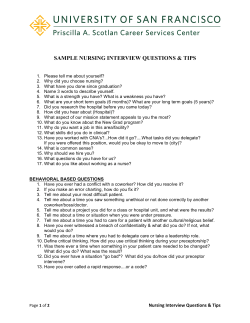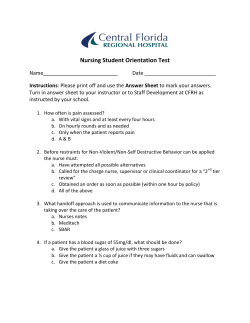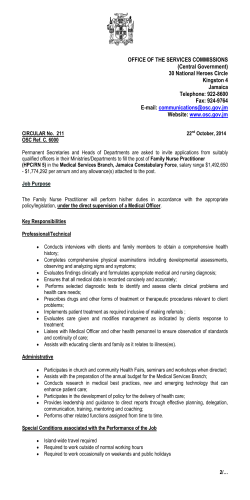
Troubleshooting - Peripheral IV PERIPHERAL IV CATHETER TROUBLESHOOTING
Troubleshooting - Peripheral IV PERIPHERAL IV CATHETER TROUBLESHOOTING Your peripheral IV catheter will not interfere with your daily activities if proper care is taken. On occasion, a problem may occur. A list of some of these problems, the causes, and what you should do about them is provided below. Your nurse may provide additional instructions. PROBLEM POSSIBLE CAUSE WHAT TO DO • Irritating medications • Irritation from the IV • Bacteria/infection • Call your nurse. She/he may give you telephone instructions or make arrangements to see you. • Dislodged IV • Call your nurse. She/he may give you telephone instructions or make arrangements to see you. Leaking • Loose injection cap • Dislodged IV • Damaged IV • Stop the infusion • Check injection cap and tighten if necessary • If the problem persists, call your nurse. Resistance to catheter flushing • Roller clamp on tubing is not adjusted correctly • Bag is spiked incorrectly • Tubing is kinked • Check solution bag and spike connection. • Check height of bag, (if gravity infusion). • Check to be sure tubing is not clamped or kinked. • Try changing the position of your arm. • Stop the infusion and flush your catheter with saline (or sterile water if instructed) and attempt to restart the infusion. • If the problem persists, call your nurse. • Dressing not securing IV catheter correctly. • • • • Irritation of vein (Phlebitis) • Redness at IV site • Red line following the course of the vein • Pain/feeling of warmth at the IV site. Fluid running into the tissue rather than the vein (Infiltrate) • Swelling while flushing the IV • Swelling while your medication is running • Coolness or blanching of your skin Medication will not run or runs slowly IV falls out Apply gauze to site. Apply pressure. Tape gauze in place. Call your nurse to arrange for a new catheter. Have questions? Call Toll-Free 1-800-665-2850 CRX 2/18/14 Peripheral IV site Care »» Your IV will always be started and/or changed by your nurse. Keep dressing clean and dry. »» IV sites will be rotated or changed every 72 hours or according to your doctor’s orders »» Inspect your IV site for any red, swollen or tender-to-touch areas. If this occurs, DO NOT use the IV. Call your nurse immediately. »» When bathing or showering, protect your IV by covering the site with a water proof covering. »» If IV tape appears to be loosening, reinforce with tape around the edges. IMPORTANT TIPS Always keep pets and animals out of the room while connecting the infusions to your IV. Always cover IV with plastic wrap when bathing – Sponge bathing is recommended. Have questions? Call Toll-Free 1-800-665-2850 CRX 2/18/14
© Copyright 2026





















